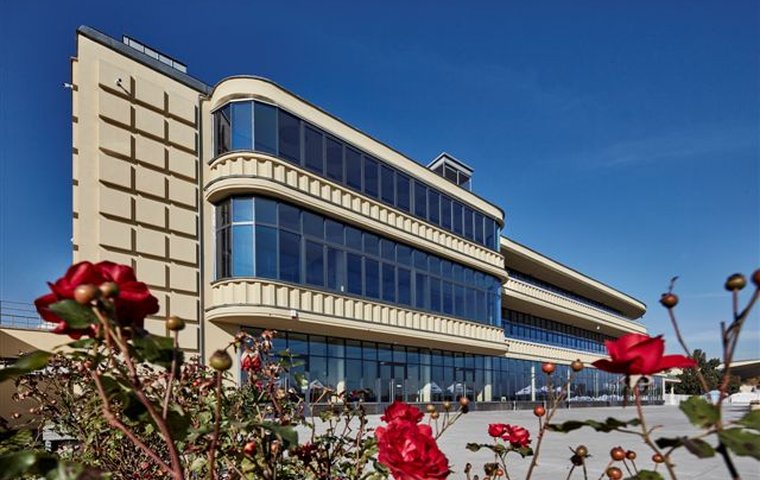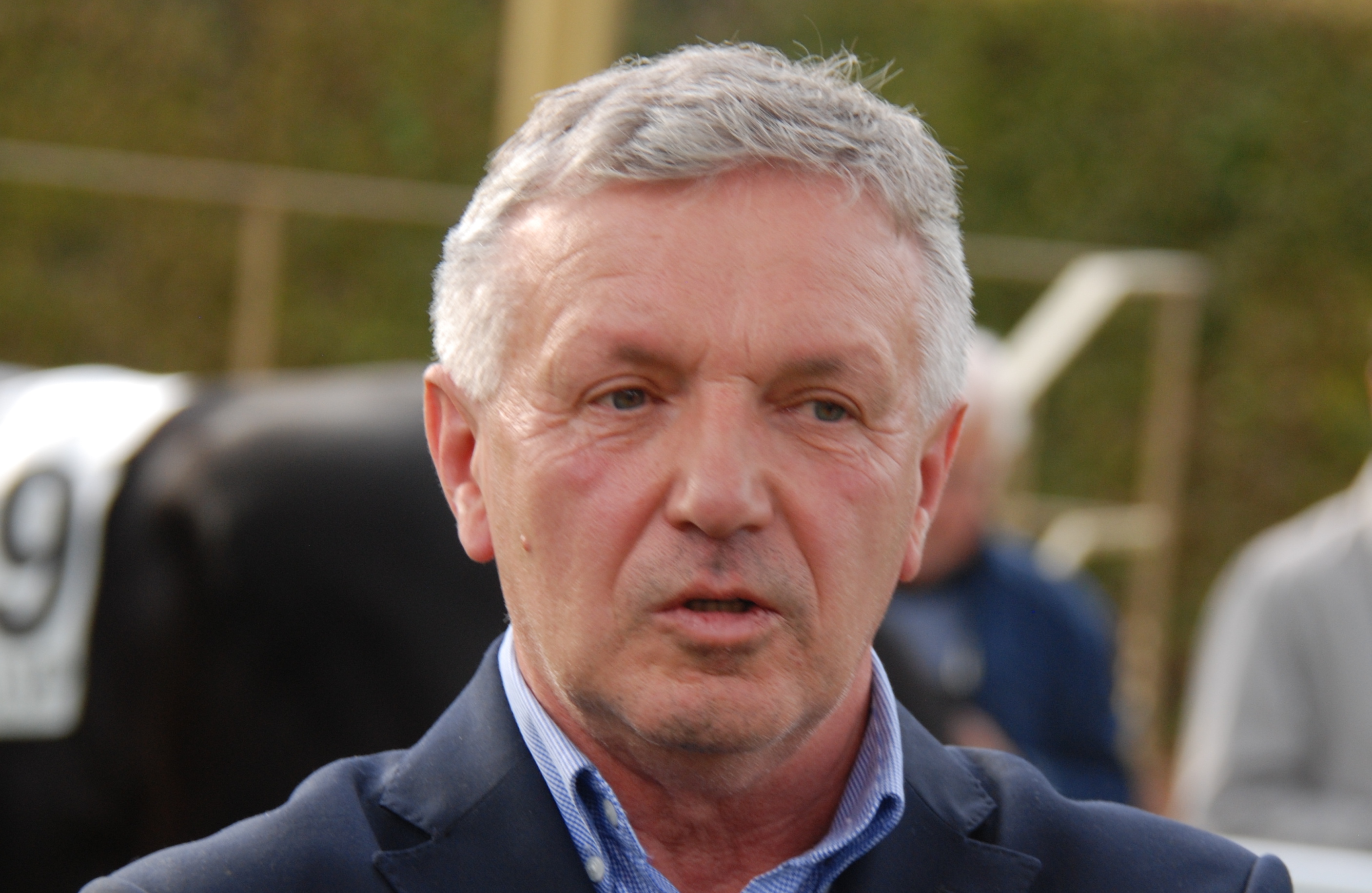
There aren’t many races, the horses aren’t very good, it’s difficult to get staff and the prize money is poor compared to most major racing nations. Sounds like a racing jurisdiction on the verge of collapse, but that’s far from the case in Poland, where significant advantages make it a country looking to a healthy future in the sport.
Just look at Krzysztof Ziemianski, who runs a flourishing training operation at the Polish racing hub around the stunning Sluzewiec racecourse near Warsaw.
The purses may not be high, but that is offset by training fees much, much lower than in the main racing nations, and Ziemianski has the support of plenty of enthusiastic Polish owners who are well satisfied with his results. And the quality of the runners looks like it’s starting to improve.
Ziemianski has been one of the most successful conditioners in the EU state for years - he’s been champion trainer twice - and you can put some of that down to his bold excursions into France, both to race and to buy new stock.
One such example was his Night Tornado, who ran a close third in the listed Prix du Carrousel at Deauville last August 3. The 4-year-old son of Night Of Thunder went on to spearhead a Ziemianski 1-2 in Poland’s top all-age race, the historic Wielka Warszawska (a local G1) at Sluzewiec on September 26, beating stablemate Petit.
Night Tornado has now won seven of his 14 races and the equivalent of €102,000 in prize money. This for a horse the trainer paid just €7,500 at Arqana’s November 2018 autumn sales.
Ziemianski has had a lot of success in Poland over the years, buying relatively inexpensive racehorses from France. “I buy yearling colts that are French-bred and therefore additionally qualify for French-bred premiums,” he told me at the Arqana October sale at Deauville. “I have drawn up a shortlist of horses I am interested in here and would be looking to buy around ten.
“I have a photographic memory of many types of horses so, when I look at them, I know immediately if it’s something I would be wishing to purchase, if the price is right. I never pay as much as €20,000 for a yearling.”
Ziemianski ended up buying ten yearlings from eight different stallions, for prices ranging from €6,000 to €15,000 at an average of just over €10,000 each. He later bought a Cloth Of Stars yearling colt for €8,000 at the Arqana November sale.
It’s a formula that has worked well since he started training in Poland in 1991.
“I have never been lower than fourth in the trainers’ championship, and I’ve won it twice and last year was second, but I win most of the big races,” he said. “Apart from Night Tornado, I have had two other notable horses, both Polish Triple Crown winners - locally-bred Intens (2011) and Fabulous Las Vegas (Air Chief Marshall) in 2018, bought for €7,500 at Arqana’s 2016 November yearling sale.”
Ziemianski is the third generation of his family involved in racing at the same Sluzewiec stables adjacent to the racetrack in Warsaw. “My grandfather was a very good jump jockey who later became a trainer, then subsequently taught my father to be a jockey when he was 16.
“My father had a successful career and rode for 30 years till 1976 before becoming a good trainer.”
He added, “When I was 14, I used to regularly ride out horses at my father’s yard before going to school. I had ambitions to follow in his footsteps.”
First training steps
But in Poland at the time it wasn’t so easy to become a trainer. “To get a trainer’s licence, you had to spend five years at an agriculture university to get a qualification. So I decided to follow my friends and learn a trade, enrolling at the local electronics school,” he said. “But, after a short while, I realised electronics was not for me and switched to the university, hoping eventually to become a trainer like my father and grandfather. After completing university, I was an assistant trainer for seven years with various yards - the last two with my father.”
At 34, Ziemianski started training on his own, and he took over his father’s yard in 1991.
“At the time, the horseracing industry was government-controlled, with each of the eight studs employing two trainers and having between 30 and 40 racehorses per yard.
“The system changed in 1995, when the strict rules ceased and the horseracing market was opened up.”
For the 2021 season, 784 racehorses were registered with the Polish Jockey Club.
Jakub Kasprzak, of the Polish Jockey Club, said, “There are now around 450 Thoroughbred racehorses and 22 trainers based at Sluzewiec, with 200 at the second racecourse, Wroclaw-Partynice in South West Poland, with a few others scattered around the country.
“There are also 191 Arabians and 44 trotters registered. Racing takes place at three racecourses - the main one being Sluzewiec, which has 51 racedays at weekends from April to November. Wroclaw-Partynice, which specialises in jump racing, has 12 days, and hipodrom-Sopot, near the Baltic Sea, has four summer meetings for flat, jumps and trotting.”
Quality new stallion
Ziemianski considers the industry has not really profited. “The breeding industry lacks experience and competitiveness, with around 50 percent of horses running today in Poland being foreign bought,” he said.
Yet Poland has 99 registered breeders, including two national studs - Iwno and Krasne. In total, 47 stallions were used in 2020, with Ecosse (a son of Peintre Celebre) and Caccini (American Post) both standing at Pegaz Stud at €4,000 and Va Bank (Archipenko) at Krasne Stud at €5,000. However, there is a lack of strength in depth and the next level of stallions stand at just €1,500.
Now 9, Va Bank is an interesting quality addition to the Polish stallion ranks. Originally bought as a yearling for €4,500 at Tattersalls Ireland in 2013, the horse was trained in Poland by Macief Janikowski for owner Janusz Zienkiewicz and won his first 12 races, including his last G3 win at Baden Baden. Barry Irwin’s Team Valor subsequently took a 50 percent stake in Va Bank and the horse continued to run creditably in Group company over the next two years, winning the G2 Premio Roma at Capannelle in November 2018 before retiring to stud.
In mid-December, Ziemianski stood third in the Polish trainers’ championship with 42 winners and 762,025 Zloty (around £137,000) in total prize money. The list- of 91 trainers - is headed by Adam Wyrzk with 56 winners and around £192,000) in earnings.
“I have 50 horses in training and every weekend from April to November at Sluzewiec I run between ten and 15,” he said. “All my owners are Polish and I have worked with many of them for years. This season I have won 50 percent of the biggest races in Poland. Over the years, I have won the Polish 2000 Guineas three times, the St Leger five times and the Derby three times.”
He added, “The overall quality of horses in Poland has been getting higher in the past few years, and a major racing country like France with higher prize money and additional premiums for French-breds, offers a sporting chance for a few of my better French-bred horses in listed races. I very seldom race in Germany.”
Poland has had success with Arabians. Indeed, the 4-year-old colt Fazza Al Khalediah won the 2018 G1 Qatar Arabian World Cup at ParisLongchamp, one of the most prestigious Arabian races in the world, with a prize pool of €1 million.
Now a stallion, the horse is owned by Polska AKF and was trained by Michał Borkowski in Wroclaw.
There are three main classes of race in Poland, ranging from the lower-grade level, offering purses of between €2,500 and €4,100, Category B races (€7,675 - €8,827, and Category A (€11,513 to the €48,357 on offer for the Wielka Warszawska).
Tote monopoly
Hanna Zalewska, public relations officer at Sluzewiec, said, “Attendances for an average weekend meeting on Saturday and Sunday at Sluzewiec are about 2,000, which increases to 15,000 for the Wielka Warszawska.”
Poland has just three racetracks, with a tote monopoly operating for both betting on- and off-course. Jakub Kasprzak said, “Totalisator Sportowy rent the Sluzewiec racetrack from the Polish Jockey Club, and the other two tracks at Wroclaw and Sopot are run by the local municipalities.
“They also operate the national lottery and their subsidiary company, Traf [www.trafonline.pl], run the tote facilities at the three tracks and at 50 off-course outlets. Since 2020, Traf has also put in place the facilities for punters to bet via the internet.”
He added, “Traf have an internet licence for horseracing bets in Poland and some big races in France. They have a contract with the [French] PMU, I think. In Poland, you cannot bet on any other racing abroad by international platform. During this season, internet wagering represented about 20-30 percent of all horserace betting.”
Sluzewiec racetrack is one of the most beautiful in the world, with three fine stands and particularly the main one, which is renowned for its unique architectural style and attracts many visitors.
Hammer blow of World War Two
The racecourse was designed by Zygmunt Plater-Zyberk and the first race took place on June 3, 1939. The Second World War put paid to racing until 1946, although Sluzwiec racecourse remained largely intact during German occupation.
The war dealt a hammer blow to Polish racing. The popular tracks of Poznan, Ludlin, Luiv and Zakopane, where you could race in the winter, have long since gone. The country had a reputation internationally for breeding quality racehorses, but the Germans plundered the best horses and breeding stock from private owners, and they were never returned.
The Polish Thoroughbred breeding industry, built up over many years, was then nationalised under Communist rule. It has yet to fully recover.
Adjacent to the Sluzewiec track are first-class facilities for training. “There are two racetracks on lush green turf for flat 2,300 metres round, and the interior jumping 2,050-metre track,” said Kasprzak. “The training stables are adjacent to the two training tracks and feature four sand tracks (for walking, trotting, normal work and for fast work) and inside the track is an area for jumps training.”
The lower prize money in Poland compared to France is offset by considerably cheaper training fees and general overall living costs, which are around 50 percent lower.
Lifeline of overseas sales
“Training costs for my owners work out at between €400 and €500 per month, and the average salary for stable staff is around €1,000 a month,” said Ziemianski. “I have ten stable staff and eight work riders for 50 racehorses. We start work at 6 am and finish by midday. Then there is evening feed.”
He added, “I love my job because I do everything myself - buying the horses, finding the owners and organising the training. It’s difficult to get staff as nobody wants to work in the winter, when it is very cold.
“Unlike France, in Poland we don’t have special training schools for jockeys, grooms and work riders. They are taught by the trainers and other experienced staff on the job and generally learn very quickly.”
Certainly the lower end of the yearling sales market in France, England, Ireland and Germany offers a lifeline for Polish trainers - much needed in an industry seeking to become more professional and strengthened with better-quality horses and investment.
Of course, having just two main racecourses with only 67 meetings a year is also a restriction, as is the lack of public attention - only the biggest races are shown on TV.



